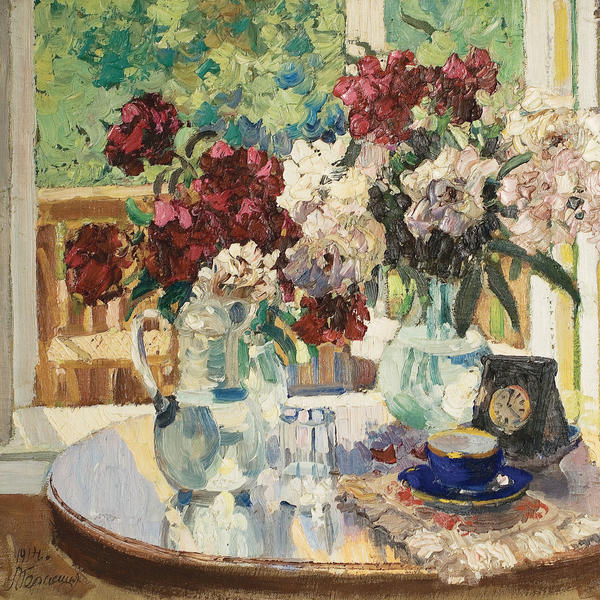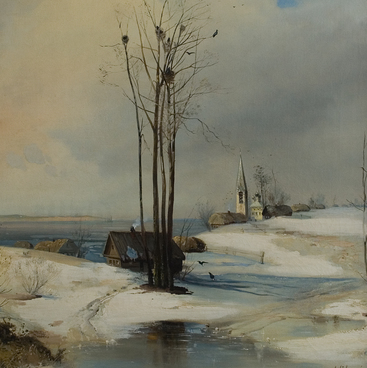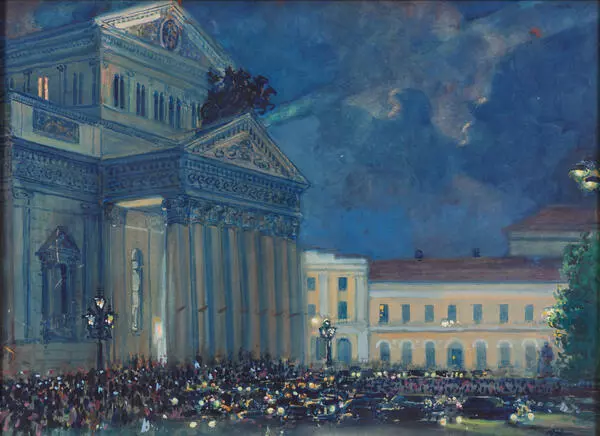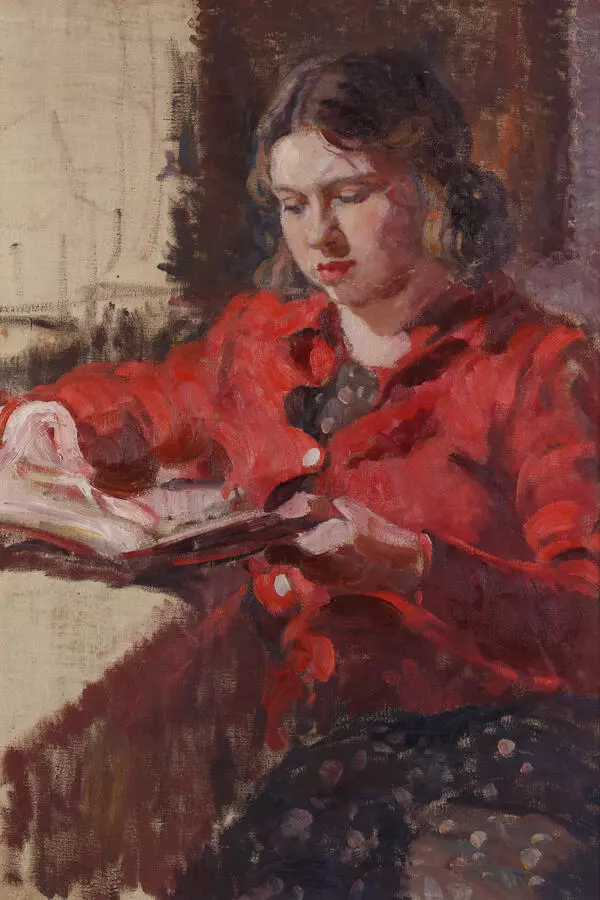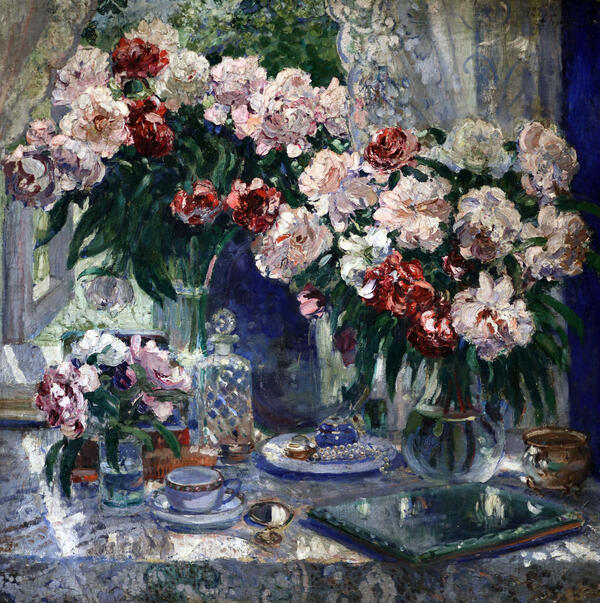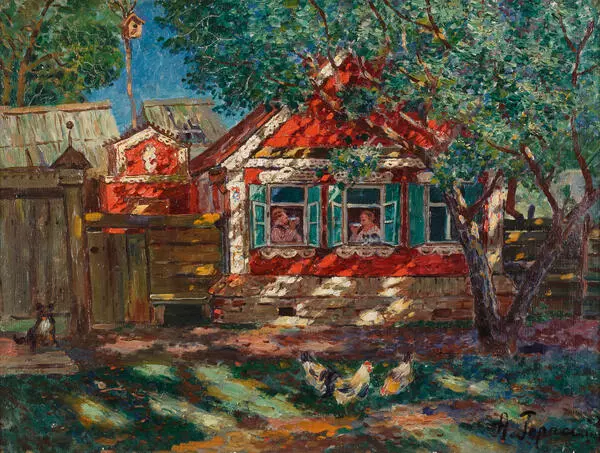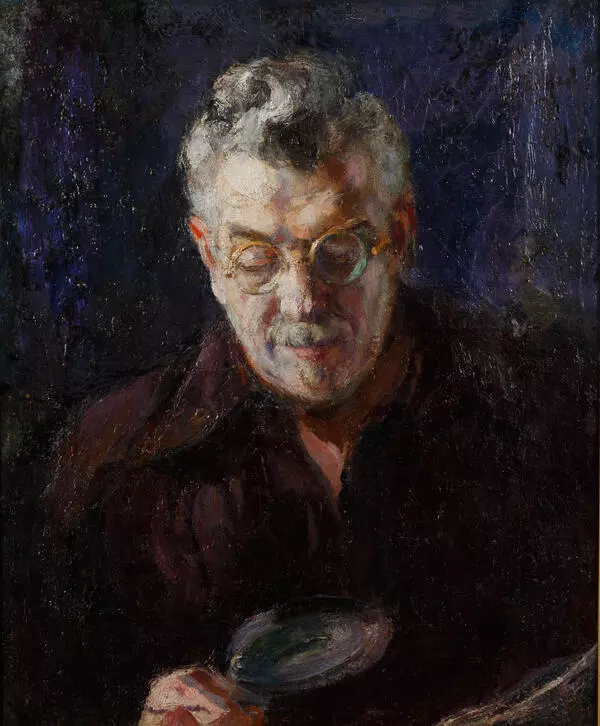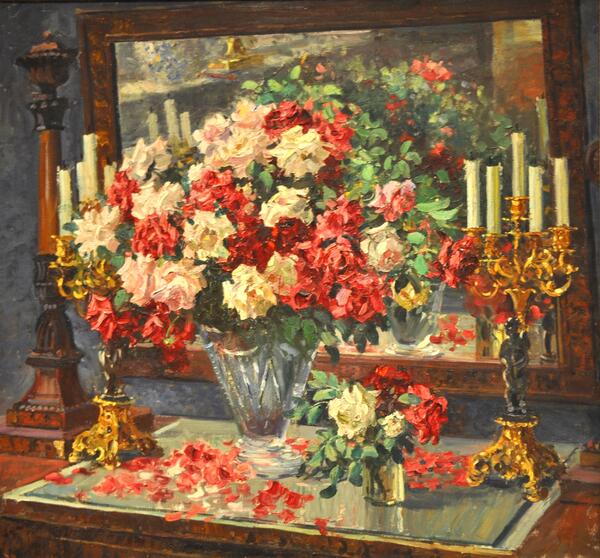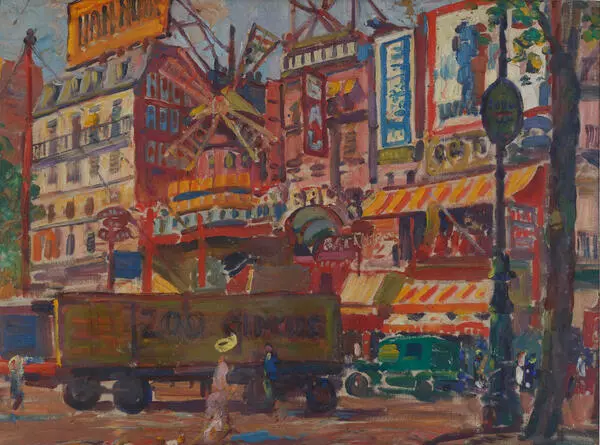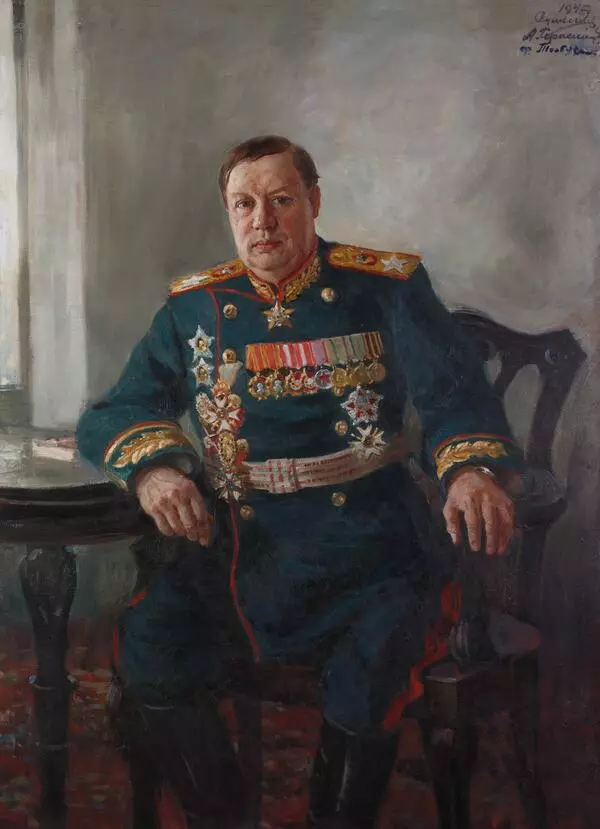Vladimir Gilyarovsky, who was a friend and adviser to founder of the Astrakhan Art Gallery Pavel Dogadin, called the artist Alexander Gerasimov ‘the best bard of Spring’. It was Gilyarovsky who advised Dogadin to purchase several works by the young painter, whose talent was admired by enlightened Moscow intelligentsia. That was why Dogadin added to his collection several paintings by Gerasimov: Window, Spring, Garden, as well as Peonies presented at the exhibition.
Peonies by Gerasimov are painted in a lush and lifelike style. The work reveals itself at a distance: the further viewers move away from the canvas, the clearer they see the three-dimensional picture of lush and rather heavy flowers, transparent vases, mirror-like table surface and thick foliage of the trees outside. When looking at it close up, the contours of flowers and other objects become blurred, but bold expressive brushwork is more visible.
For his Peonies, Gerasimov chose impasto (from the Italian pastoso that means pasty), a popular technique in oil painting. The artist painted this work in opaque layers overlapping each other; dense and powerful brushwork conveys an impression of three-dimensionality.
Gerasimov created Peonies in 1914, under the influence of Impressionist painting style. The artist’s early works were distinguished by a vigorous and even playful painting manner and an abundance of bright living colors. However, Gerasimov became famous as a master of Socialist Realism – an ideological method in art that was mainly intended to epitomize socialist ideals in a realistic and slightly romantic manner. Gerasimov often painted party leaders, Joseph Stalin in particular.
These socialist realist works brought Gerasimov the honorary title of People’s Artist of the USSR. He was among the first artists to win this title, together with Vera Mukhina and Boris Ioganson. In his lifetime, Gerasimov was awarded four Stalin Prizes, the Order of Lenin and the Order of the Red Banner of Labor; he headed the USSR Academy of Arts from 1947 to 1957.
Peonies by Gerasimov are painted in a lush and lifelike style. The work reveals itself at a distance: the further viewers move away from the canvas, the clearer they see the three-dimensional picture of lush and rather heavy flowers, transparent vases, mirror-like table surface and thick foliage of the trees outside. When looking at it close up, the contours of flowers and other objects become blurred, but bold expressive brushwork is more visible.
For his Peonies, Gerasimov chose impasto (from the Italian pastoso that means pasty), a popular technique in oil painting. The artist painted this work in opaque layers overlapping each other; dense and powerful brushwork conveys an impression of three-dimensionality.
Gerasimov created Peonies in 1914, under the influence of Impressionist painting style. The artist’s early works were distinguished by a vigorous and even playful painting manner and an abundance of bright living colors. However, Gerasimov became famous as a master of Socialist Realism – an ideological method in art that was mainly intended to epitomize socialist ideals in a realistic and slightly romantic manner. Gerasimov often painted party leaders, Joseph Stalin in particular.
These socialist realist works brought Gerasimov the honorary title of People’s Artist of the USSR. He was among the first artists to win this title, together with Vera Mukhina and Boris Ioganson. In his lifetime, Gerasimov was awarded four Stalin Prizes, the Order of Lenin and the Order of the Red Banner of Labor; he headed the USSR Academy of Arts from 1947 to 1957.

